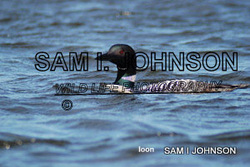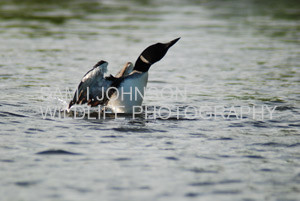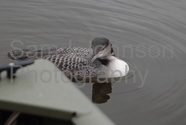LOONS
LOONS
The Loon for many has symbolized the solitude and beauty of an evening by the lake. While watching this beautiful bird in action you can see its phenomenal diving abilties. With dives up to 200 feet down that can last up to ten minutes below the water. (Encyclopedia Britannica)
Loons or Divers as they are called in the UK or Ireland, are a group of aquatic birds found in many parts of North America and Northern Eurasia (Europe, Asia, & debatably Africa). Loons are excellent swimmers, using their feet to propel themselves above & underwater while their wings provide assistance. Because their feet are so far back on the body, loons are poorly adapted to moving on land, & usually avoid going onto land, except when nesting.
They do not mate for life- the male fights for the territory & the female usually stays with the breeding site ( acquiring a new partner). Finding their prey by sight, they eat mainly fish as well as crayfish, frogs, snails, salamnders& leeches. Loons can live as long as thirty years. ( wikipedia.org)
Loons or Divers as they are called in the UK or Ireland, are a group of aquatic birds found in many parts of North America and Northern Eurasia (Europe, Asia, & debatably Africa). Loons are excellent swimmers, using their feet to propel themselves above & underwater while their wings provide assistance. Because their feet are so far back on the body, loons are poorly adapted to moving on land, & usually avoid going onto land, except when nesting.
They do not mate for life- the male fights for the territory & the female usually stays with the breeding site ( acquiring a new partner). Finding their prey by sight, they eat mainly fish as well as crayfish, frogs, snails, salamnders& leeches. Loons can live as long as thirty years. ( wikipedia.org)
COMMON LOON

"Common Loon" photo taken by Sam I Johnson
Printed on glossy paper, sealed on foam board for protection.
Printed on glossy paper, sealed on foam board for protection.




